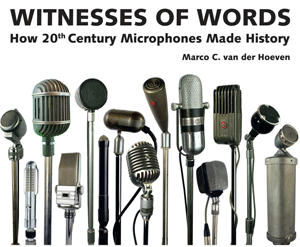|
The Beyer(Dynamic) M 260 Ribbon, mic of this month, dates back to 1962 and is a true vintage classic.
It was introduced along the M 130 (figure of eight pattern) and M 160 (hyper cardioid), but contrary to those two, this is a single ribbon not a double ribbon type. All three of these have a great number of fans amongst studio engineers and artists, their sound is often compared to that of expensive condenser mics.
The M 260s recording pattern is hyper cardioid and has a straight frequency characteristic from 50-18.000 Hz. Its succesfull brethern were strictly meant for the recording of instruments or ambience, but the M 260 was even more versatile and was also intended as a handheld vocal microphone or voice-over, apart from being great for recording overheads, wind instruments, piano and percussion. It has more output than the M 160 even though it has just a single ribbon.
The mic has the typical warm ribbon sound and enhances low frequencies if it is used in close proximity to a sound source.
The later version, the M 260-80 was different not just because it was black, it had a built in low cut at 80 Hz, which meant it no longer had this huge sound caused by the proximity effect.
Other companies thought along the same lines for their hypercardioid condensers; the Schoeps CM 640 and Neumann KM 85 also supported this bass cut, which made them only fit for use close to a sound source (and unfit for recording from greater distance). This makes the older version even more popular than the black successor, which was sold until recently, in total M 260s were sold for over 50 years!
The M 260 was relatively small for a ribbonmic; the M 500 cardioid vocal ribbon, from 1969, was a lot bigger, like its modern successor the TG V 90 R.
The quality of the M 260 is really high and although ribbon microphones are often considered too fragile for heavy usage, these survive without a problem and many M 260 are still functionning today.
Beyer used to make a different version, with the same capsule, as a more rugged vocal mic (with a plastic casing!) meant for entertainers: the model M 320 with a larger acoustic labyrinth, like the American legendary RCA 77D and DX ribbon mics had. The frequency plots (in the ads bottom left and mid) show the difference this has on the sound.
Although these M 320 are hard to find, they too are great vintage microphones and still very useable today.
Many more types feature in my book Witnesses of Words. More information about that can be found at www.witnessesofwords.com

|
|
|
|
|
|
|
Above: the original grey Beyer M 260
Middle: the 1962 sheet and the later M 260-80 version
Left: early US ad for the M 260
Below: US ad for the M 320 and image of the M 320 version for entertainers |
|
|
|